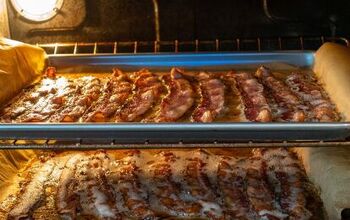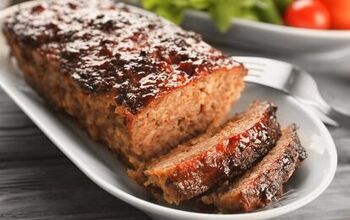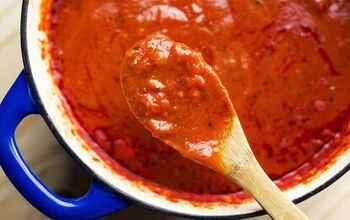How Long Does Cooked Bacon Last In The Fridge?

Who doesn’t love bacon? Great on its own or added to any meal, bacon is one of the most versatile foods out there. But what happens when you have some bacon leftover that needs storing for later usage?
Cooked bacon can last for 4-5 days before it is no longer safe for you to eat. Bacon goes bad after only 2 hours if you leave it exposed to the air without storage unless it is cured with salt. Store your cooked bacon in an airtight container to prevent it from going bad.
Bacon in the Fridge
Just like any other kind of food, there is one major question to ask: has it been cooked? Fresh items can generally be stored for slightly longer in the fridge than cooked items. Bacon is no different in this regard.
Unopened bacon should last for about 2 weeks. That’s because it is sealed properly from air and moisture that can permeate open foods. Cooked bacon will generally keep for about half that time. The better that you store it – airtight containers are always best – the longer that it will keep.
Bacon in the Freezer
In much the same way, the storing procedure will dictate how long you can keep bacon in the freezer. Unopened bacon that has been properly sealed can last for as long as 8 months in the freezer. Still, even cooked bacon can last for quite a long time before going bad; about 6 months or so.
You can even store bacon grease in the fridge or freezer as well. Grease should keep for about 6 months in the fridge or 9 months in the freezer before it starts to go rancid. The best rule of thumb for any food being stored is to get to it sooner rather than later to ensure optimal taste, color, and texture.
How Do You Defrost Frozen Bacon?
As stated above, bacon can freeze for quite a long time. Having bacon in the freezer allows for immediate bacon fixes whenever you desire. But there are proper methods for defrosting bacon so that it can be consumed safely.
- Defrost in the microwave. Most modern microwaves come equipped with a variety of defrost settings, one of which includes bacon. Simply throw it into the microwave, press the appropriate button, and your bacon will be defrosted.
- In the refrigerator. You can also choose to go through one of two slow methods. Putting bacon that has been in the freezer into the fridge can slowly thaw it to ensure that it is safe to eat.
- Coldwater. In a similar way to the fridge, this method will slowly defrost the bacon. Rapid changes in temperature can result in bacon that is unsafe for consumption.
Quick Rule of Thumb. Regardless of how you choose to defrost your bacon, the internal temperature is the most essential part. Make sure that the internal temperature of your defrosted bacon is between 145 and 180 degrees. The easiest way to do this is simply to warm it in the oven.
How Do You Tell if Bacon is Bad?
Like any other kind of meat, it is imperative to ensure that bacon has not spoiled. Eating rancid bacon can be very dangerous and all proper precautions should be taken. The quickest and easiest way to verify the quality of the bacon is to check the “sell by” date on the packaging. 2If so, here are a few ways to tell that the bacon has gone bad.
- Check the coloring. One of the easiest ways to tell if bacon has gone bad is the color. When it is fresh, bacon has a pinkish/red hue to it. When it goes bad, that color will change. In extreme cases, it will take on a green hue. Most of the time, it will turn a dullish gray coloring to it. Bacon that has just turned can be difficult to visually identify.
- Touch it. An easy way to determine the freshness of your bacon is to give it a touch. Much like lunch meat, bacon that is going bad will have a slimy texture to it even before it starts to change in color.
- Smell it. This is a tricky one. Most bacon has preservatives or spices in it. So, when bacon starts to turn, it can be difficult to tell by smell alone. Still, give it a smell. If the bacon smells odd or “off”, toss it.
- NEVER taste. The one thing that you should never do to test the freshness of bacon is to taste it. Even just a quick taste can give that bacteria the entrance that it needs, making you very sick in very short order. Even if you think the bacon is good, don’t taste before ensuring that it is still good.
Getting Rid of Spoiled Bacon
There are some out there that would advise feeding the spoiled bacon to a cat or dog. These animals have stronger gut bacteria that can hold up against spoiled meat. Still, if the meat has been spoiled sufficiently, it can even make your pets sick.
The best course of action is to put the spoiled meat into an airtight plastic bag and put it in the garbage. Make sure to put it into an airtight garbage can; rodents and other critters may smell the meat and try to get at it.
Storing the Different Types of “Cooked” Bacon
Bacon that has been prepared in any way, shape, or form can be classified as cooked bacon. We might think of something that we fried up that day, but it can also include cured or preserved bacon. Knowing how to store these different types is important.
It is also important to be aware of the different types of bacon. After all, “bacon” is just a cut of meat that uses stripes of lean meat combined with fat. Fresh bacon, for example, is also known as pork belly or fat pork and has no preservatives in it.
Storing Leftover Bacon
There will be a time or two where you’re done preparing a meal only to find that you have leftover bacon. If stored properly, the bacon should keep for anywhere from 4-5 days.
- Set on a paper towel. When you’re done cooking the bacon, set them on a row of paper towels. The paper towels will soak up the excess grease and allow the leftover bacon to keep far better.
- Pat down. Before you store the bacon for later use, pat it down with paper towels. Any of the grease that didn’t seep out should be patted dry. Excess grease in the bacon can cause it to spoil in the fridge faster.
- Airtight container. Finally, put your bacon carefully into an airtight container or Ziploc bag. Make sure that any excess air has been removed from the container in order to provide optimal longevity.
What is Cured Bacon?
Cured bacon is very similar to other lunch meats in that there are preparations that can slow down the growth of bacteria. Keep in mind that curing bacon does not eliminate the growth of bacteria, particularly if the temperature hits 145 degrees Fahrenheit during the process of curing.
Curing is also a great way to provide additional flavoring. It is a good idea to cook any raw bacon within a day or so of hitting your fridge, though packaged bacon can last up to a week. Any leftovers that have not been frozen or refrigerated should not be eaten under any circumstances.
Related Questions
How Long Does Cooked Bacon Last on the Counter?
For just about any type of food, the quicker that you get them into a container and into storage, the longer they will keep. Bacon that has been cooked can sit out at room temperature for around 2 hours or so before the quality is compromised.When bacon is left at a temperature between 40- and 140-degrees Fahrenheit – also known as the “danger zone” – it can grow bacteria rapidly. If your bacon has been sitting on the counter for longer than two hours, discarding it is the best course of action.
Is it Safe to Eat Cooked Bacon Left Out Overnight?
While it is a good rule of thumb to discard bacon that has been sitting at room temperature for 2 hours or more, pre-cooked bacon is slightly different. This type of bacon has been cured heavily with salt. The salt kills most of the fungi and bacteria, making it safer to consume after a longer period of time.This is in stark contrast to “raw” or “fresh” bacon. Pre-cooked bacon can be left out at room temperature for a few days while still being relatively safe to consume (even if the taste isn’t necessarily the same).
How Do You Keep Cooked Bacon Crisp?
Keeping bacon crisp when it sits out for a little while can be difficult. When you’ve cooked or partially cooked your bacon, wrap it tightly in aluminum foil or in an airtight container. Keeping air away from it should be enough to hold the crispness for at least a few days.

Ryan Womeldorf has more than a decade of experience writing. He loves to blog about construction, plumbing, and other home topics. Ryan also loves hockey and a lifelong Buffalo sports fan.
More by Ryan Womeldorf



























